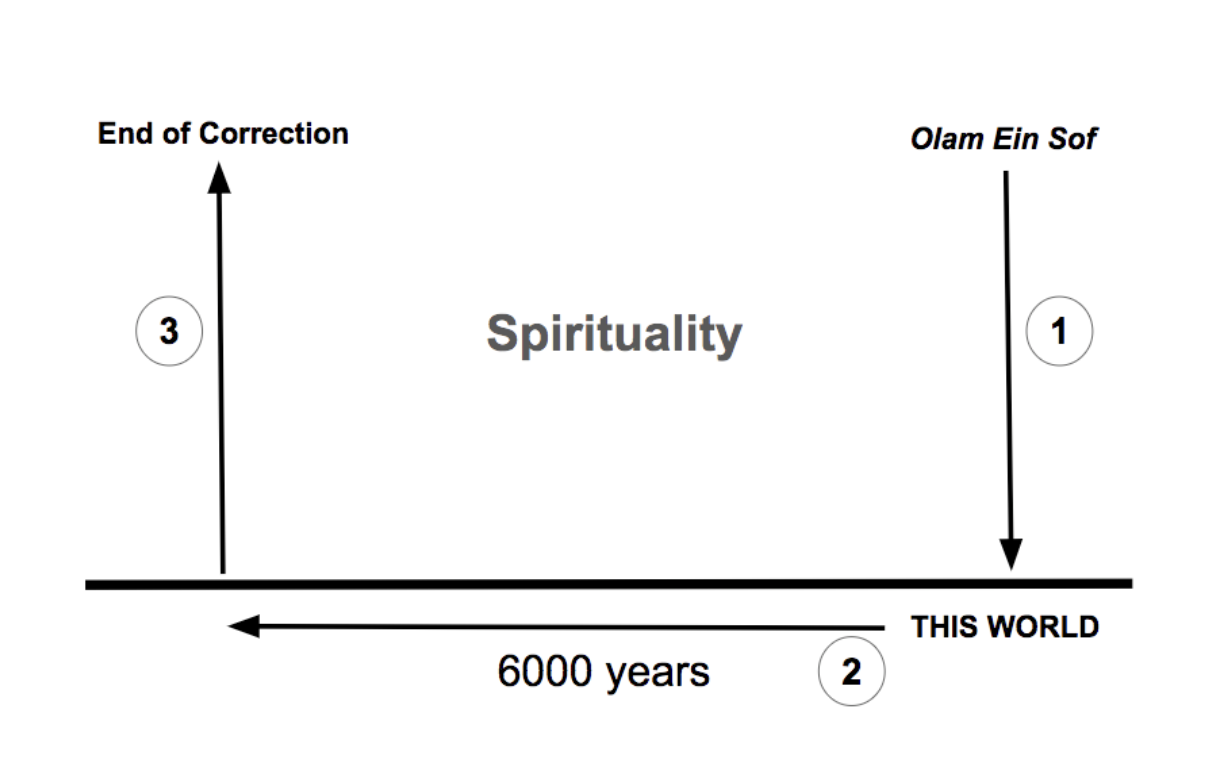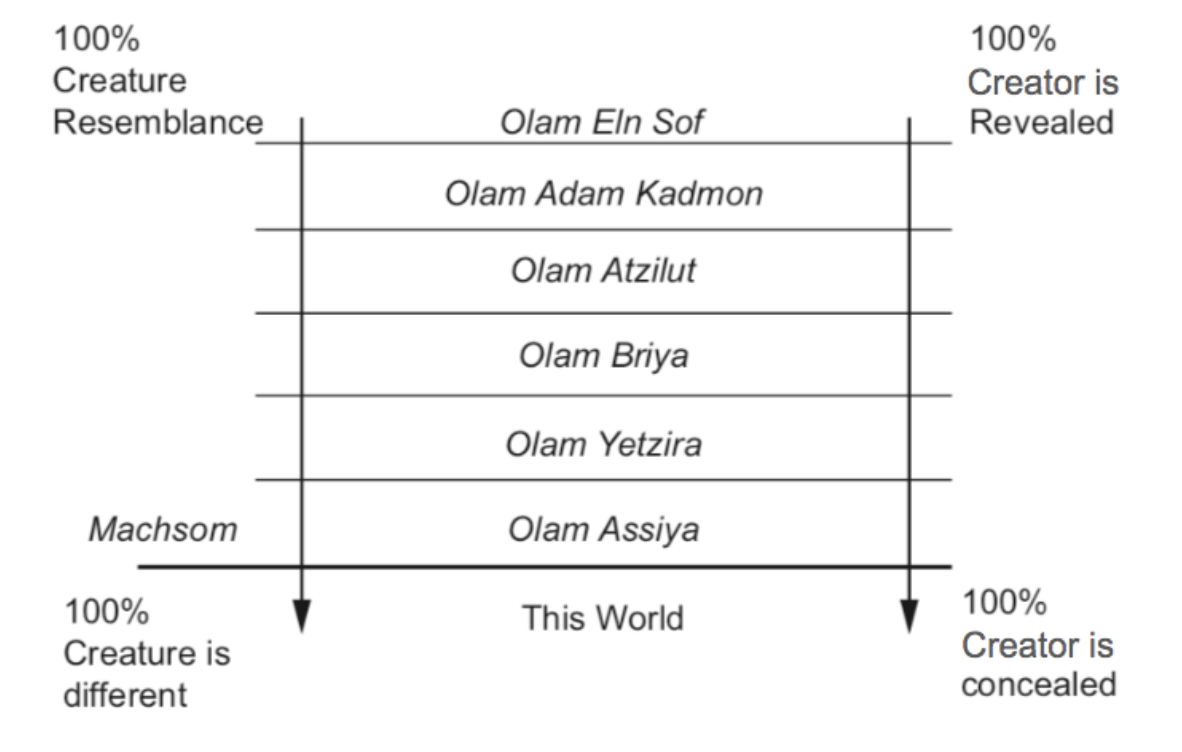Lesson 3: The Three-Axis Model
In this lesson, we will learn the reasons for creating the desire and deepen our understanding of the process of its development. Up to now, we spoke mainly about the reality in our world, meaning how the Wisdom of Kabbalah is revealed to a person in accordance with the development of desire in our world. Whereas, this lesson, we will start specifically from the other end of creation, the root of creation, the thought creating the desire.
- The structured process of creation according to the wisdom of Kabbalah.
- The evolution of human desire throughout history.
- “The advantage of light over darkness” — its meaning and the spiritual law it reveals.
- How we begin to sense and enter the spiritual world.
Lesson 3
The Three-Axis Model
“The advantage of the light from the darkness.”
- Ecclesiastes, Chapter 2:13
"It is known that nothing appears in its true form, only through its opposite, “As the advantage of the light from within the darkness.” This means that everything points to another, and by the opposite of something, the existence of its opposite can be perceived.
Hence, it is impossible to attain something in complete clarity if its parallel is absent."
- Baal HaSulam, Shamati 34
"For example, it is impossible to estimate and say that something is good, if its opposite, pointing to the bad, is missing. It is the same with bitterness and sweetness, love and hate, hunger and satiation, thirst and saturation, separation and adhesion. It turns out that it is impossible to come to love adhesion prior to acquiring the hate of separation."
- Baal HaSulam, Shamati 34
"The light of this world was created out of darkness, “As the advantage of the light from within the darkness,” and “What good is a candle during the day?” its light does not shine in the daytime. This is the meaning of the Klipa [shell/peel] that precedes the fruit. For this reason, he who becomes a partner to the Creator in the work of creation brings out the light from the darkness…"
- Baal HaSulam “You Have Made Me in Behind and Before"
"Now we can understand what are day and night in the work. A person should know that he must feel what is darkness, or he will not be able to enjoy the light, since in anything that a person wants to taste any flavor, whether it is worth using, he must learn one from the other, as it is written, “as the advantage of the light out of the darkness.” Likewise, a person cannot enjoy rest unless he knows what is fatigue.
- Rabash “What Are Day and Night in the Work?” Article No. 34, 1988
Definition of the Wisdom of Kabbalah
“This wisdom is no more and no less than a sequence of roots that hang down by way of cause and consequence, following fixed, determined laws that interweave into a single, exalted goal described as “the revelation of His Godliness to His creatures in this world.””
- Baal HaSulam, The Essence of the Wisdom of Kabbalah
"This wisdom is generally divided into two parallel, equal, and identical orders, like two drops in a pond. The only difference between them is that the first order extends from above downward, to this world,
The second order begins in this world and traverses from below upward precisely by the same routes and make-ups imprinted at their root when they appeared from above downward.
- Baal HaSulam, "The Essence of the Wisdom of Kabbalah"
The Three Axis Model

The 2nd axis
Prehistoric - basic desires
From 35,000 BCE to 4,000 BCE.
Desires for food, sex and shelter.
Humanity is divided into tribal societies of hunters and gatherers.
The 2nd axis
Antiquity - desires for money and possessions
From 4,000 BCE and up to the 5th century CE.
The peak of the agricultural revolution, many conquests creating new civilizations.
The 2nd axis
The Middle Ages - Desires for honour and power
From 5th century CE until the 15th century
- The formation of hierarchies, castes and classes;
- religious wars;
- humanity is divided according to religious/class affiliation.
The 2nd axis
Modern era - the desire for knowledge and erudition
From the 15th century to the end of the 20th century.
- Discoveries of continents
- The Renaissance period
- The Scientific Revolution
- Urbanisation
- The Industrial Revolution
- The Information Revolution
The development of the desire for pleasure
1. Prehistory - basic desires
From 35,000 BCE to 4,000 BCE. Desires for food, sex and shelter. Humanity is divided into tribal societies of hunters and gatherers.
2. Ancient times - desires for money and possessions
From 4,000 BCE and up to the 5th century CE. The peak of the agricultural revolution, many conquests creating new civilizations.
3. The Middle Ages - Desire for honour and power
From 5th century CE until the 15th c. The formation of hierarchies, castes and classes. Religious wars. Humanity is divided according to religious/class affiliation.
4. Modern era - Desire for knowledge and erudition
15th century to the end of the 20th c. Discoveries of continents; the Renaissance period; the Scientific Revolution; urbanisation; the Industrial Revolution, the Information Revolution.
Developmental stages of the desire
- The prehistoric period (about 35,000 years ago) →
- Antiquity (about 5,000 years ago) →
- The Middle Ages (up to the 15th century CE) →
- The Modern Era (from the 15th century onward) →
- The awakening of the point in the heart
Summary
- The Creator is the quality of bestowal — “Come and See.”
- Nature is a closed system with fixed and absolute laws.
- The advantage of light that comes from darkness.
- The three-axis model of development.
- The will to receive — the driving force of creation.
- We learn how to receive through the awakening of the point in the heart.
- The wisdom of Kabbalah teaches us how to receive correctly,
but also…
how to function in our world, how to understand the reality around us,
and above all - how to transform it for the better.

